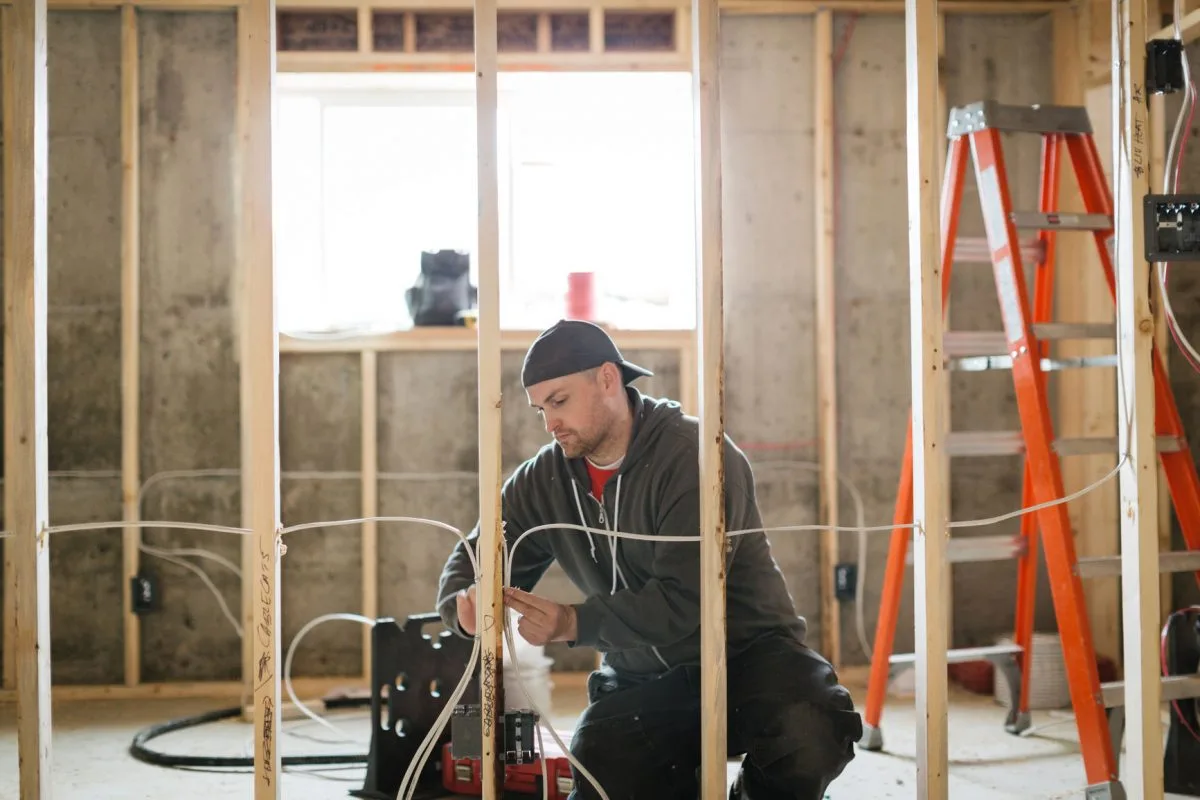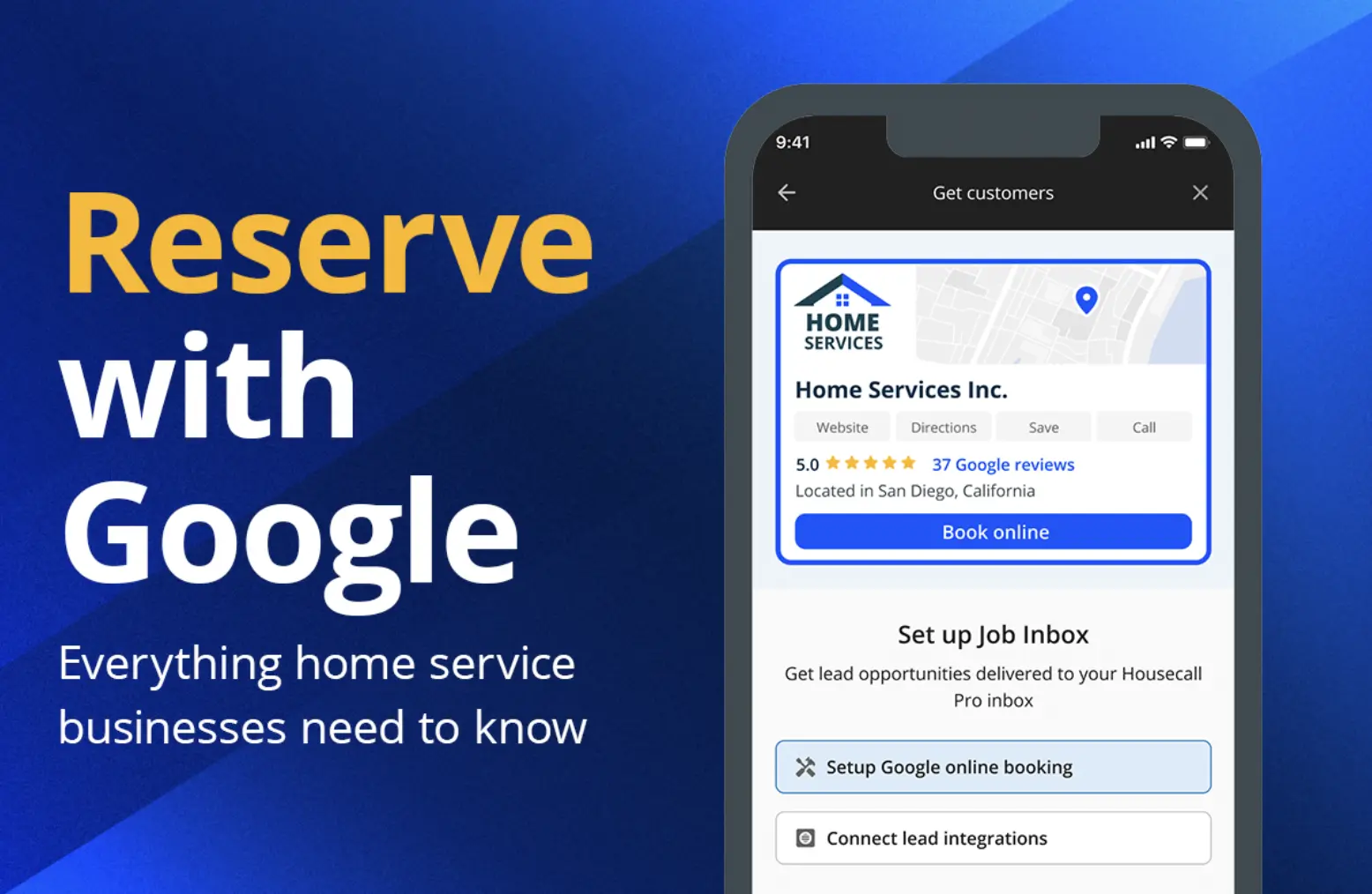
As a contractor, your goals are simple:
- Deliver quality work.
- Finish the job on time.
- Satisfy the client.
In return, you expect payment in full and without delay.
Of course, the above scenario is the one that usually plays out; however, this doesn’t always happen and non-payment from a customer can prove costly for your business.
Let’s explore why there are times when a customer won’t pay for services, what to do when a customer doesn’t pay, and a few remedies in case non-payment goes well beyond a bill’s due date.
Why Customers Avoid Payment and What to Do About It
So why would someone avoid paying a bill or invoice they owe?
As a business owner, you understand the consequences for non-payment – late fees, legal fees, liens or worse. Aside from the added costs, avoiding a bill is a huge hassle for everyone involved.
But it does happen. Usually, the reason for non-payment takes one of three forms:
Let’s define them and see what remedies are available to address each situation.
Problem with the Invoice
Invoicing, as a general rule, should be extremely straightforward. You do the work, you send out the bill, the client pays it, thank you, good night.
However, plenty of instances of non-payment revolve around the invoice. Commonly, it’s merely misplaced or lost in the mail.
In these cases, no harm, no foul. Just send a duplicate, and you’re good to go.
What if the client has the invoice and still refuses payment due to something they don’t like?
Clients might call into question the charges, the work performed, or express surprise at the timing of the invoice. “I was expecting an invoice after one month, not two weeks,” is a common retort.
Of course, the customer could be sincere.
In other cases though, you might face the client from hell. The one who is happy with nothing, questions everything, and always angles for discounts or free services.
In either scenario, best bet is to be upfront & transparent with your customers, before, during and after the job.
Contracts
Create a contract. Make sure it’s legally binding, agreed upon and signed by all parties, and includes the following:
- Scope of Work: A clear outlay of the work to be completed. Make sure it’s specific and detailed.
- Project Timeline: When the work starts, when it ends, and include any milestone dates.
- Payment Terms: Covers the payment due dates. For example, explicitly state if payment is due within 15, 30, 60 days of invoice date (if emailed) or 15, 30, 60 days after the invoice is received (if sent through traditional mail).
- Payment Schedule: When and how you send invoices. Again, be specific. If its every two weeks via email, notate it and make sure you send them on time.
- Fee Schedule: Clearly outline your late charges. Also, include lightly supply outlines for legal fees should you have to use other means to pursue lingering balances.
Invoice Details
When it comes to the invoice itself, there are a few best practices to follow here as well. Make sure to pay attention here, invoicing mistakes are more common than you think. Ensure your invoices include:
- Your company name and logo, physical address, phone number, and email address
- The name of the client and their physical address
- Any legal requirements, such as a Tax ID
- A date and invoice number
- The payment terms
- Late fees if the client doesn’t meet payment terms
- Detail of the work completed and the itemized charges (the greater the detail, the better)
Aside from the above, send invoices when the contract stipulates to ensure you maintain compliance with your contract terms.
Adhering to the above protects you if a client questions their bill. You’ll have a clear paper trail to track every action and every charge.
Problem with the Client
We all like to believe that when we start a repair job or perform renovations everything will move like clockwork.
Usually, that is not too far off from how most jobs go.
Sure, you might have a few hiccups – troublesome subs, lousy weather, unexpected repairs – but overall it’s nothing that you can’t handle.
What if the hiccup turns out to be the owner? You know, the individual that agreed for you to work on their home, but then the customer won’t pay for your services.
Problematic clients typically come in three varieties:
- They can’t pay
- They won’t pay
- They’ll get to it when they get to it
Can’t pay
Certainly, we don’t want to discount that hard times can hit anyone at any time. A homeowner can contract you for work under the best of circumstances, but find themselves on a downward trajectory in a matter of weeks.
Lost employment, a rejected loan, or unforeseen financial hardship like a death in the family can all contribute to funding shortages. In other cases, a homeowner overestimates what they can afford at the outset of a project.
Although these specific situations are tough to deal with, when all parties enter into a contract in good faith, they should be made to honor it.
Won’t Pay
This type of client is usually easy to spot after a few minutes in their presence.
- They either have zero clue as to what they want or know it a little too well. In either case, they’ll end up dissatisfied no matter what you do.
- They attempt to negotiate your non-negotiables, particularly when it comes to payment. You’ve probably been asked, “think we can move the payment terms out another week?,” on more than one occasion.
- They seem like they are holding something back, and the information they provide is suspiciously incomplete or severely lacking.
However it may come across, the common theme is they’re looking for a reason not to pay you, or already have a scheme figured out to avoid payment.
Will Pay When They Get Around To It
- “Thanks for the reminder. I’ll get that payment out today.”
- “Do you mind shooting me another invoice?”
- “I just need a few more [insert days, weeks, months here].”
With this final group, it’s likely you will eventually get paid – in nickels and dimes, over the course of a year, and only after you’ve had your lawyer, your mother, your kindergarten teacher, and your pet’s veterinarian call them.
So, what can you do if a customer doesn’t pay?
Pro Tip: Housecall Pro user Tracy Collins handles late-payments the following way: “One way I have used for residential, is to send a letter on company letterhead and giving them a time frame and then telling them there would be a lien filed on their home.
The way I have done it with commercial is called the CEO or tracked a top official down on Twitter and asked for payment. I got a delinquent account that was past due almost a year paid in two days!”
Similar to the invoice issue, it all starts with taking steps before the job even begins.
Credit Checks
Yes, contracts are significant but did you know you can check the credit of a potential client before anyone signs on the dotted line. Landlords do it on leases that might run less than $10,000 a year. Why wouldn’t you for a job that could cost twice as much?
Deposits
Once you complete the credit screen be sure to collect deposits.
Whether it’s a flat fee, a percentage of the total project estimate, or the first in a series of payments, collect some monetary figure up front.
It proves a financial commitment on the part of the client and provides you funding to move forward with placing orders or hiring subs.
Halt the Project
Although it might be the last resort for some, never hesitate to halt work if the previously scheduled payments dry up. No pay, no play is a powerful motivator and is far easier to pull off if you bake it into your contracts.
Improve Payment Structure
Okay, so we’ve hammered home the shortcomings of the nightmare client, but as the provider, you can also assist some of the non-deadbeat late payers with a diverse and straightforward payment structure.
From checks to credit cards and payment gateways like PayPal, having a wide array of avenues for payments, including deposits, leaves little excuse for a customer not to pay.
You should also set up the ability to collect real-time payments in the field and facilitator tools like Housecall Pro’s payment feature can make this a reality.
A Problem with the Work
It’s the phrase any business owner dreads hearing from a client:
“I’m not satisfied.”
In some cases, you might see this coming – recall the clients that don’t know or know too much of what they want. In other scenarios, a dissatisfied client withholding payment can catch you off guard.
Whether it be an expectation issue, or just a personality conflict, the truth is, not every customer may be right for your business. Unfortunately, many home services professionals find this out the hard way, with an unhappy client who either refuses to pay or leaves a bad review on a site like Yelp.
However, there are steps to minimize client dissatisfaction and ensure payment in full after the final punch list.
Communication
From the first meeting to the final walkthrough, make communicating with your client a top priority.
Get their phone number and email address and their preferred method of contact at that initial discussion.
Touch base at regular intervals to keep the client apprised of what’s going on. Is it a week-long project?
Provide updates on day one, day three, and day five. Is the renovation longer? Send weekly project recaps that detail what’s complete, what’s in progress and what’s up next.
No matter how you communicate or how often, be sure to document all of it – from phone calls to emails to in-person discussions, take excellent notes and have a place set aside in a client’s file to keep them handy.
Does it seem like overkill? Absolutely. However, it certainly won’t when a client holds back funding over a dispute, and you can say “There’s no dispute and I have the 50 plus pages of communication to prove it.”
Change Orders
Sometimes in the course of a project, the scope of work requires adjustment. Timelines can change, estimates can go up, and clients can become frustrated.
If not accurately accounted for, this can lead to disputes over who approved what and when, and lead to challenged invoices and withheld payments.
To combat this, make sure you have a good change order. A change order, in simple terms, documents the need to modify the original scope of work. However, as this article from the American Bar Association points out, change orders carry some complexity.
The critical factor in executing change orders is that they be in writing, are heavily detailed and agreed to by the client.
Talk to the Client Face to Face
If a client is adamant about an unfulfilled aspect of the work you performed, don’t get mad, get personal.
Personal as in offer to meet with the client face to face and review any perceived shortcomings. If an issue exists, resolve to make it right. If it’s feasible, extending a discount could loosen the client’s hold on their payment, with only a minor compromise on your end.
Ultimately, a positive, good faith confrontation can result in both an outcome of payment and a customer won over by your willingness to meet them halfway.
How to Address Clients That Do Not Pay
While the understanding of why some clients neglect their bills and what to do to avoid them is helpful, inevitably, you’ll encounter your share of non-payers.
So what to do then?
Depending on the severity – or level of delinquency – of the balance owed, you may need to employ tough collection tactics. However, unless a client is operating in outright refusal to pay mode, it’s always recommended to use escalating steps to collect what’s due.
Keep Asking for Payment
We previously mentioned communication in the course of a project, but when chasing down payments after the fact, the approach is a bit different.
For many of your delinquent clients, a straightforward reminder via phone or email that payment is due is the only push they’ll ever need. With others though, your efforts to procure payment may require multiple attempts.
Make sure to have a follow-up plan should payments fall behind. Don’t only use the clients preferred means of communication, but contact them at any other numbers they provided.
In the course of your pursuit, try to understand if there is a specific reason for non-payment and either work to remove the excuse (immediately send a new invoice to replace a lost copy for example) or offer to address a stated problem.
When you reach a particular threshold, don’t be shy about providing a copy of the original contract, including all of the payment stipulations, and advising the client you plan to seek other remedies for payment if they continue their refusal to pay.
Free resource: Have a hard time asking clients for payments? We know that feeling.
Use our free email, phone scripts, and message templates to ask for payments professionally.
Provide a Payment Plan
Maybe not always ideal, based on your business model, giving a customer the option to pay their debt over time will ensure you are collecting some money, which is better than none at all.
Payment intervals are beneficial towards those clients experiencing cash flow problems or ones that have to wait on funding.
If a client is willing to act in good faith, showing flexibility in how they can resolve their debt will eliminate some pressure on your end. It will not only keep funds coming in on the outstanding balance, but you’ll also avoid having to take costlier measures to resolve it.
The original contract you executed may also outline late fees or interest, so do not refrain from including those too. A payment plan does not release your client from their agreed upon terms.
Should the customer miss a payment or back away from the plan, make it clear to them that you will escalate the collection efforts to other remedies, including a lien or a lawsuit.
File a Lien
When your initial collection efforts fail, the first step in legal recourse involves filing a lien. A lien is a filing that allows the filer, typically a contractor or sub, the right to secure payment on unpaid invoices.
A highly useful collection tool, a lien can create plenty of headaches for homeowners. Also referred to as a mechanics lien, liens place a blemish on a title – a public property record – and can impede the ability of an owner to refinance or sell their home.
Liens themselves are not difficult to file, but the process can be tedious. You’ll have to provide specifics as to the work performed, outstanding payment, and other details as outlined by your state’s lien laws.
You might be at the mercy of the county clerk’s office and their specific requirements for filing the lien, as any mistakes can render the claim useless, so be sure to be thorough here.
For customers who hope to sell or refinance, a lien could quickly force their hand to pay their debt. If they do not, you can foreclose the lien, which is you taking direct action against them to settle the dispute.
Taking Legal Action For a Non-Payment
If you’ve exhausted all previous collection methods and are still fighting to shake loose a payment, your final remedy is to file suit against the delinquent client.
A suit can be brought against a client in small claims or civil court, depending on the amount of debt in question. Small claims amounts will vary from state to state.
You can also bypass the lien process and file suit directly if you so choose, but beware that the lawsuit will be more involved and time-consuming.
Should a lawsuit be necessary, documentation will include (but may not be limited to):
- The executed contract
- All invoices and change orders included in the job
- Documented communications including payment requests
- Proof of completed work such as pictures or signed off walkthroughs
Although unpleasant, a lawsuit can jumpstart a collection if all other options fail. Keep your files in order to ensure that if it gets this far, you can be successful in proving the client’s breach of contract so that you can finally be paid.
Final Thoughts
Non-payment is an inconvenience that all companies must face at one time or another.
If you find yourself struggling with a situation where a customer won’t pay for services, the above strategies can help you avoid these types of clients in the future and collect on those you’re chasing for payment now.
If you are consistent with your customer screening and collection methods, in the end, you’ll find yourself with a list of clients that appreciate the hard work you perform – who will also pay you for it.






